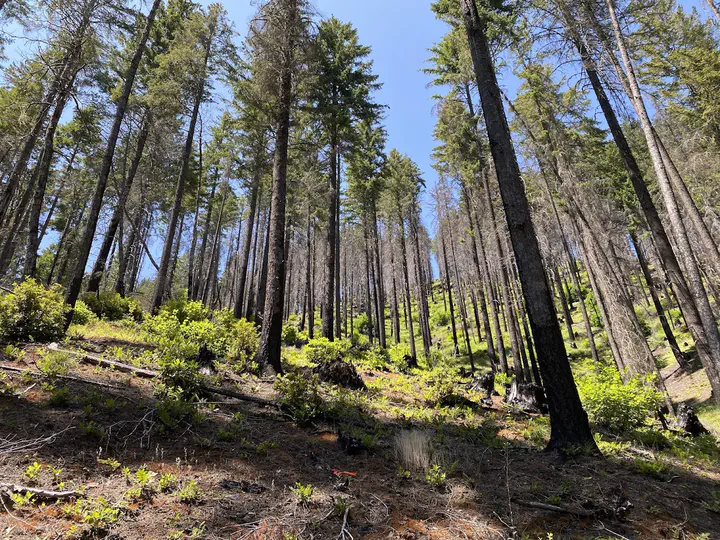Forest treatments and landscape fire in Northwest Cascadia
 Photo by Madison Laughlin
Photo by Madison LaughlinA rare opportunity to evaluate landscape fuel reduction effectiveness in a high-severity fire regime
Problem Statement: While the efficacy of fuel reduction treatments on landscape fire patterns is well-studied in frequent-fire forests, studies in high-severity fire regimes are rare. Such studies are, in fact, are completely missing for the major forest region comprised by western Washington and northwest Oregon (western Cascadia). Conventional wisdom has been that landscape fuel treatments are largely ineffective in high-severity regimes; however recent findings from some high-severity-regime forests and anecdotal observations from recent fires in western Cascadia suggest such treatments can significantly influence fire. Understanding of the potential role of landscape fuel-reduction treatments is critical in these forests, which are likely to experience the largest regional increases in area burned due to climate change, and have several major population centers adjacent to highly productive forest landscapes. Despite high interest from Federal, Tribal, state, and city agencies, there has been a lack of relevant research for the simple reason of a scarcity of fire events historically. However, after a near century of scant fire activity in western Cascadia, a recent spate of large wildfires has burned ~500,000 ha in seven years. These fires burned through landscapes containing an array of treatments that reduced fuels (e.g., commercial and non-commercial thinnings, hazardous fuel reductions, past low-severity wildfires), providing the first broad-scale opportunity to examine how real-world landscape fuel-reduction treatments influenced landscape burn-severity patterns.
Objectives: The objective of this work is to evaluate how landscape fuel-reduction treatments influence landscape patterns of burn severity in a high-severity-regime ecosystem where opportunities to investigate such effects have been rare to non-existent to date. We will use spatial data on burn severity for recent fires and past pre-fire treatments to assess how the amount and configuration of treated area influenced burn severity at a range of spatial scales. Additionally, we will leverage an existing extensive post-fire plot network (n=150) with new plots that have been treated and then burned (n=30) to compare on-the-ground field conditions for a subset of the spatially analyzed sites. We will address the following questions: (1) How do past thinning treatments affect subsequent landscape patterns of burn severity? (2) How do past low-severity wildfires affect subsequent landscape patterns of burn severity? (3) How do the effects of the above treatments differ across a range of weather conditions? (4) How do post-fire fuel profiles and fire hazard differ between areas with thinning + wildfire, wildfire + wildfire, and wildfire alone?
Benefits: Currently there is a fundamental lack of knowledge of how landscape fuel-reduction treatments can influence burn severity in the western Cascades. The proposed work will be the first to explicitly examine the efficacy of fuel reduction in western Cascadia in terms of subsequent wildfire severity and pattern. We expect our results to inform the utility of landscape fuel treatments in a high-severity, stand-replacing fire regime, the types of treatments that are more and less effective, and the weather conditions under which fuel treatments will have greater or lesser value. Our management partners, including Federal and state agencies, Tribes, as well as water utilities, cities, and towns within the wildland-urban interface, will benefit as there is no existing fuel treatment efficacy data in this densely populated, heavily forested region.
PI: Brian J. Harvey
Co-PIs: Daniel C. Donato, Joshua S. Halofsky, Karen E. Kopper
Funded by: Joint Fire Science Program